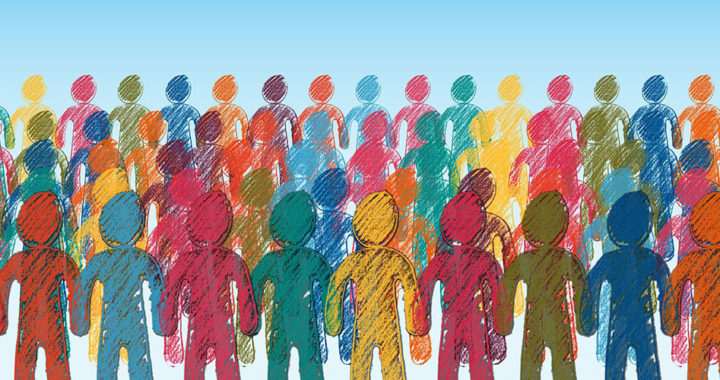Social capital can mean different thing to different scholars. This lack of consensus can be confusing. Some might consider social capital as just another buzzword that is devoid of actual meaning. Others might regard it as a concept that lacks practical applications. Nonetheless, this article lists down and describes the major definitions of social capital.
The different definitions of social capital
1. As a valuable social network: In his work “The Forms of Capital” that was first published in 1985, French sociologist and philosopher Pierre Bourdieu defines social capital as, “The aggregate of the actual or potential resources which are linked to possession of a durable network of more or less institutionalized relationships of mutual acquaintance or recognitions.”
Sociology professor Alejandro Portes mentioned that the definition provided by Bourdieu served as the most theoretically refined analysis of social capital among other definitions and analyses that appeared during before and during the 1980s. However, this definition did not received widespread public attention because “The Forms of Capital” was originally written in French.
In interpreting further the definition from Bourdieu, Portes mentioned that social capital represents the benefits to individuals that come from their participations in groups and their deliberate construction of sociability for the purpose of creating resources.
2. As a catalyst for coordination: American political scientist Robert David Putnam provided another definition of social capital in his 1995 essay “Bowling Alone: America’s Declining Social Capital” and the 2000 derivative book “Bowling Alone: The Collapse and Revival of American Community.”
Putnam specifically defined social capital as the features of social life such as trust, norms, and networks that enable individual participants to pursue shared objectives. In other words, these features that collectively form a social capital facilitate coordinated actions.
Francis Fukuyama, another American political scientist and political economist, provide a somewhat similar definition in his 2001 journal article “Social Capital, Civil Society, and Development.” He said social capital represents initiated norms or general rules formed by repeated social interactions that enable individual members of the community to cooperate.
3. As a medium for resource acquisition: Sociologist Nan Lin has focused his research on social networks and social capital. He specifically considers social capital as an access through network ties. He further provided an individualistic approach to the definition of social capital, thus describing it as an investment in social relations with expected returns in the marketplace.
In his book “Social Capital: A Theory of Social Structure and Action” that was first published in 2001, he said that his simple and straightforward definition of social capital is consistent with the various interpretations from scholars such as Pierre Bourdieu, Robert Putnam, and Alejandro Portes, among others.
American sociologist and professor Ronald S. Burt also provided a similar definition. His journal article “The Contingent Value of Social Network” included a comparison between social capital and human capital. He said that while human capital is about individual ability, social capital pertains to opportunity,
It is interesting to note that Burt explained how social capital brings forth opportunity by illustrating how a manager for an organization acquires competent personnel or in other words, human capital through social capital. A 1988 journal article from American sociologist James Coleman centered its discussion on the role of social capital in the creation of human capital, specifically by analyzing how the family and surrounding community can help reduce dropout rates in schools and improve the academic performance of students.
Conclusion: What is social capital?
The simplest way to understand social capital is to consider it as a concept in sociology and economics that explains how different values or benefits are generated from social networks, especially from positive and productive interrelationships among individuals, organizations and institutions, and the community.
Another way to understand it is to consider it as a form of tangible or intangible capital that facilitates value-creating social networks or networks of relationships involving individuals, organizations and institutions, and the community. One example of the benefits of social capital is the concept of liquid networks in which collaboration is deemed as a source of competitive advantage for generating ideas and creating innovations.
It also represents the movement and acquisition of valuable resources within a particular social network. Examples of these resources include information, human capital, as well as products and services. These resources move freely within the network due to the prevalence of trust, reciprocity, and collaboration.
Nonetheless, the aforementioned definitions of social capital have been used by other scholars, as well as business leaders, civic leaders, and politicians to highlight the benefits coming from building and maintaining interrelationships within the community. However, it is important to note that there are contentions against this concept and this has been explained in the alternative concept called “Negative Social Capital ” in which negative outcomes can emerge from close-knitted social networks and specific social relationships.
REFERENCES AND FURTHER READINGS
- Fukuyama, F. 2001. Social capital, civil society, and development. Third World Quarterly. 22(1): 7-20. DOI: 10.1080/713701144
- Bourdieu, P. 1985. The forms of capital. In ed. J. Richardson, Handbook of Theory and Research for the Sociology of Education. New York: Greenwood Publishing
- Burt, R. S. 1997. The contingent value of social capital. Administrative Science Quarterly. 42(2): 339-365
- Lin, N. 2001. Social capital: A theory of social structure and action. Cambridge: Cambridge University Press
- Portes, A. 1998. Social capital: Its origins and applications in modern sociology. Annual Review of Sociology. 24: 1-24. DOI: 10.1146/annurev.soc.24.1.1
- Putnam, R. D. 1995. Bowling alone: America’s declining social capital. Journal of Democracy. 6(1): 65-78. DOI: 10.1353/jod.1995.0002
- Putnam, R. D. 2000. Bowling Alone: The Collapse and Revival of American Community. New York: Simon & Schuster
